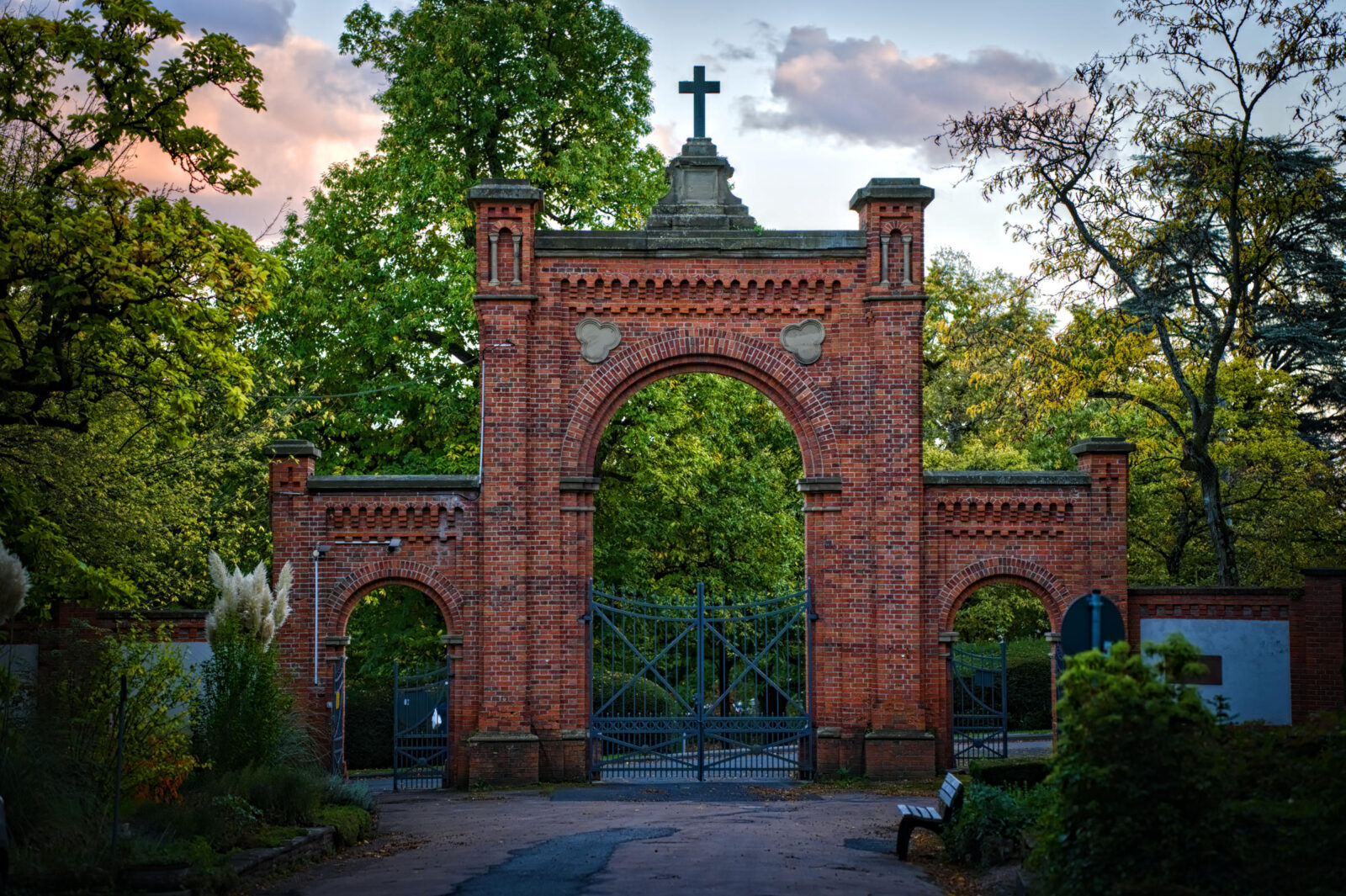

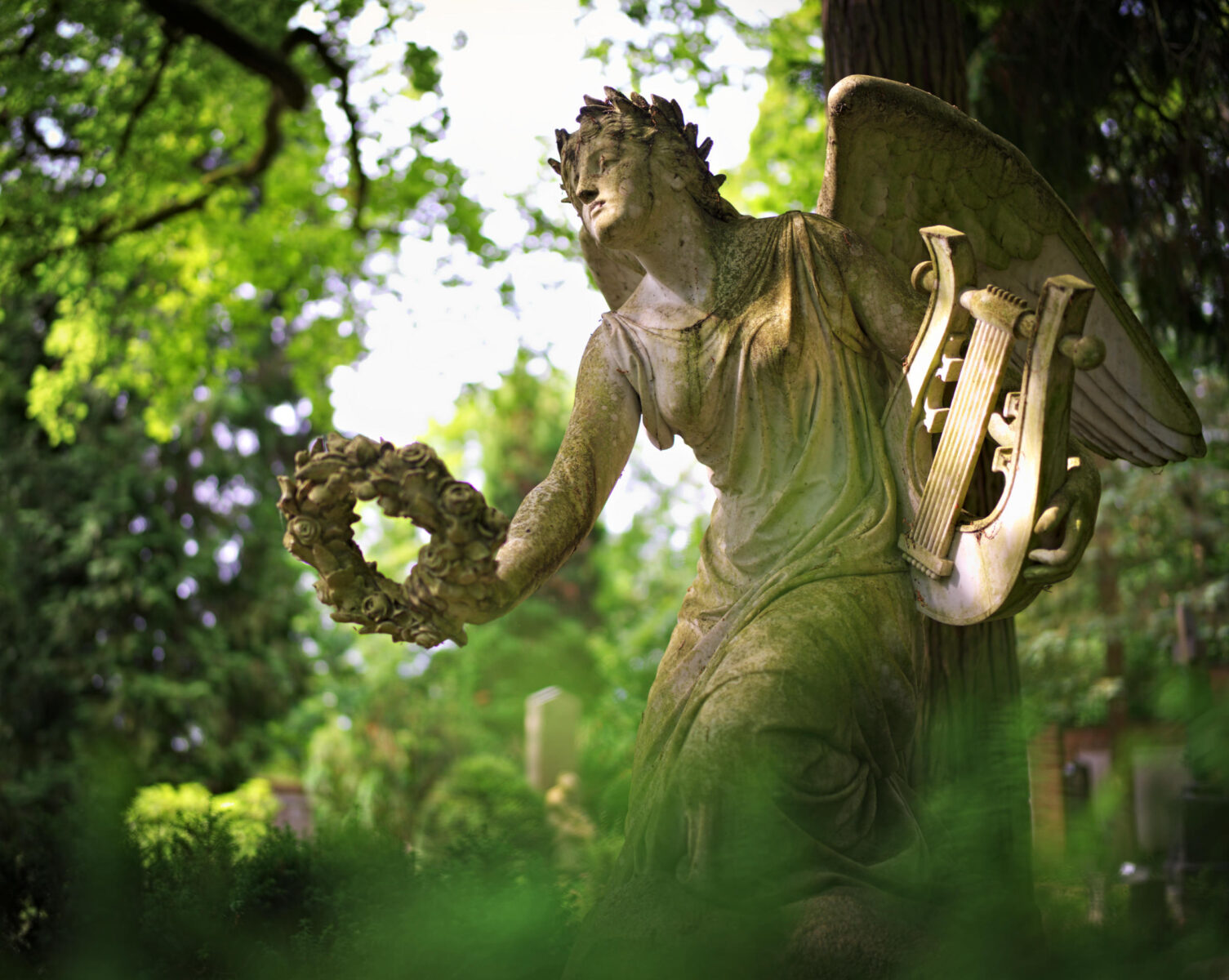
The tomb of John Goldenberg (*24.08.1832 †27.09.1882) in the early morning with the gatekeeper’s house and the main portal in the background and of the officer and writer Alfred Adelmann von Adelmannsfelden (*04.07.1848 in Stuttgart †18.04.1887 in Wiesbaden) and his wife Lucy Fleischer (*26.06.1880 †24.05.1913).


Another view of the toimb of Alfred Adelmann von Adelmannsfeldenand and Lucy Fleischer and a statue of a woman on the grave of the Dr. Wagner family.


Tomb of the sculptor Carl Wilhelm Bierbrauer (*08.08.1881 †23.10.1962) and his wife, Ida Bierbauer (*28.07.1884 †13.03.1963) and of Ferdinand Möhring (*19.01.1815 Alt Ruppin †01.05.1887 Wiesbaden), German composer, poet, conductor and organist.
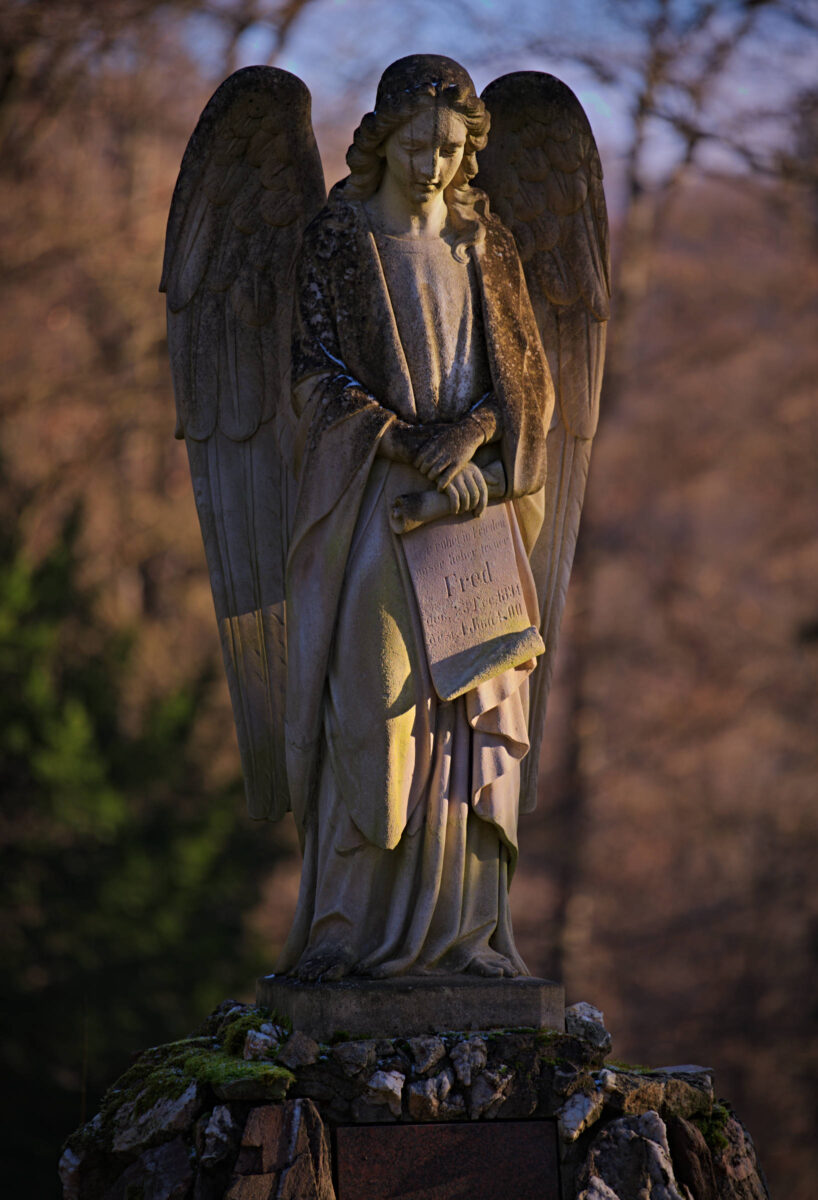

The left-hand of these two angel statues has a peculiarly melancholy expression on her face, but this can only be recognised from a certain angle, which – and this problem is common to many cemeteries – is unfortunately coupled with an unfavourable background. The inscription of the date of birth and death on the scroll in the angel’s hand cannot be deciphered with absolute certainty, but I assume (a check with grazing light confirmed me) that it reads “born 23 Dec. 1841 / died 1 June 1900”. In any case, the text is “Here rests in peace our dear faithful Fred” (Hier ruhet in Frieden unser lieber treuer Fred / geb. 23. Dec. 1841 /gest. 1. Juni 1900).
The other angel was bathed in intense sunlight for a few minutes when a small hole opened up in the clouds after a rain shower at the beginning of January, while dark clouds still hung in the background.
The body of the buried anticipates what the grave will not be spared: decay. The first thing that usually disappears is the inscription. In the case of this angel, nothing was recognizable until my wife and I used grazing light on Good Friday 2025 to make visible again what weathering and lichen had tried to erase:
Maria / Antoinette Caesar / geb. Schade / geb. 30. Januar 1857 / gest. 6. Februar 1906 / Frau Hendrike Agnes / Caesar-Driver / aus Oldenburg / geb. 15. September 1864 / gest. 19. Dezember 1933 / R.I.P.
And on a separate stone plaque: Eduard Caesar / geb 27.Dezember 1852 / gest. 8. November 1937.
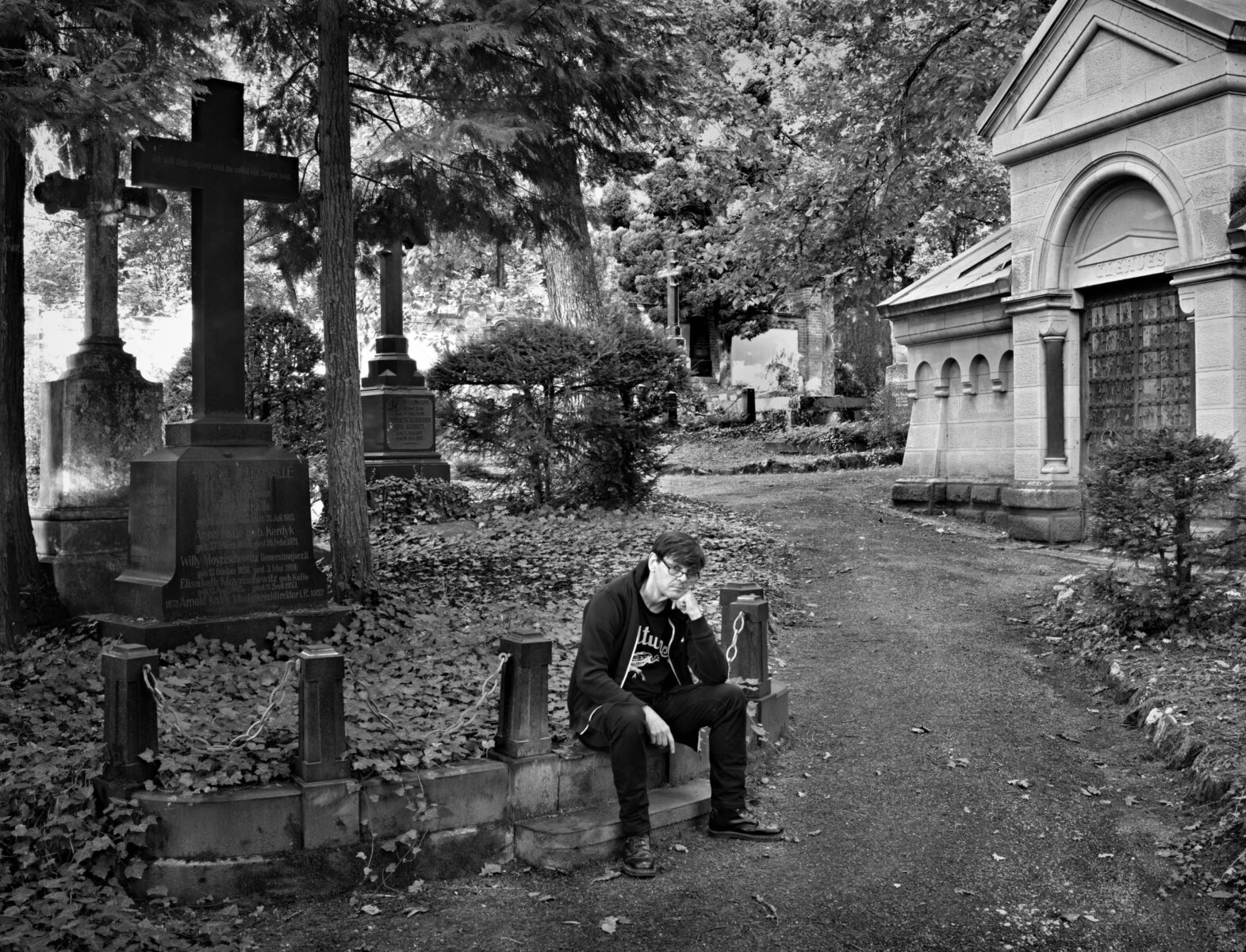

Two cemetery selfies, both taken on 24.09.2023, the left one at 06:40 UTC, the right on the same day at 15:01 UTC.
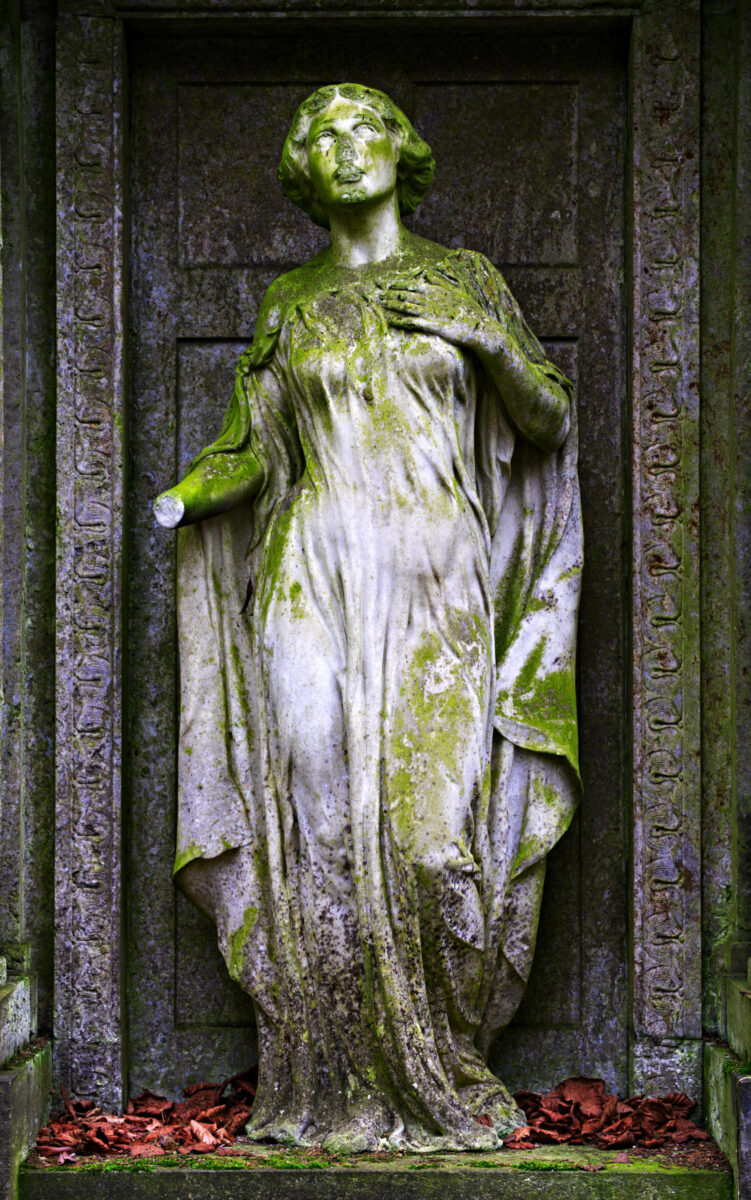

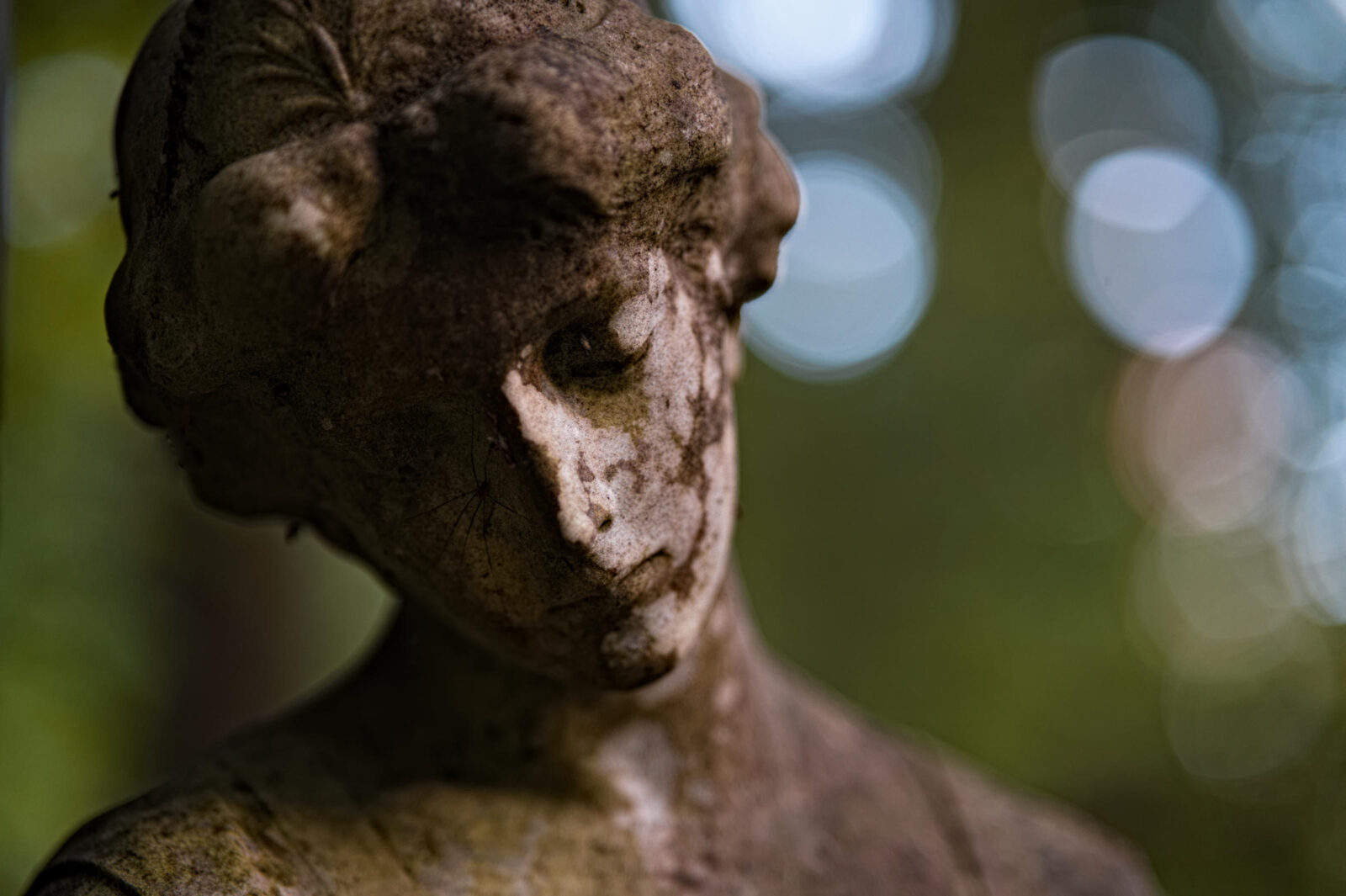
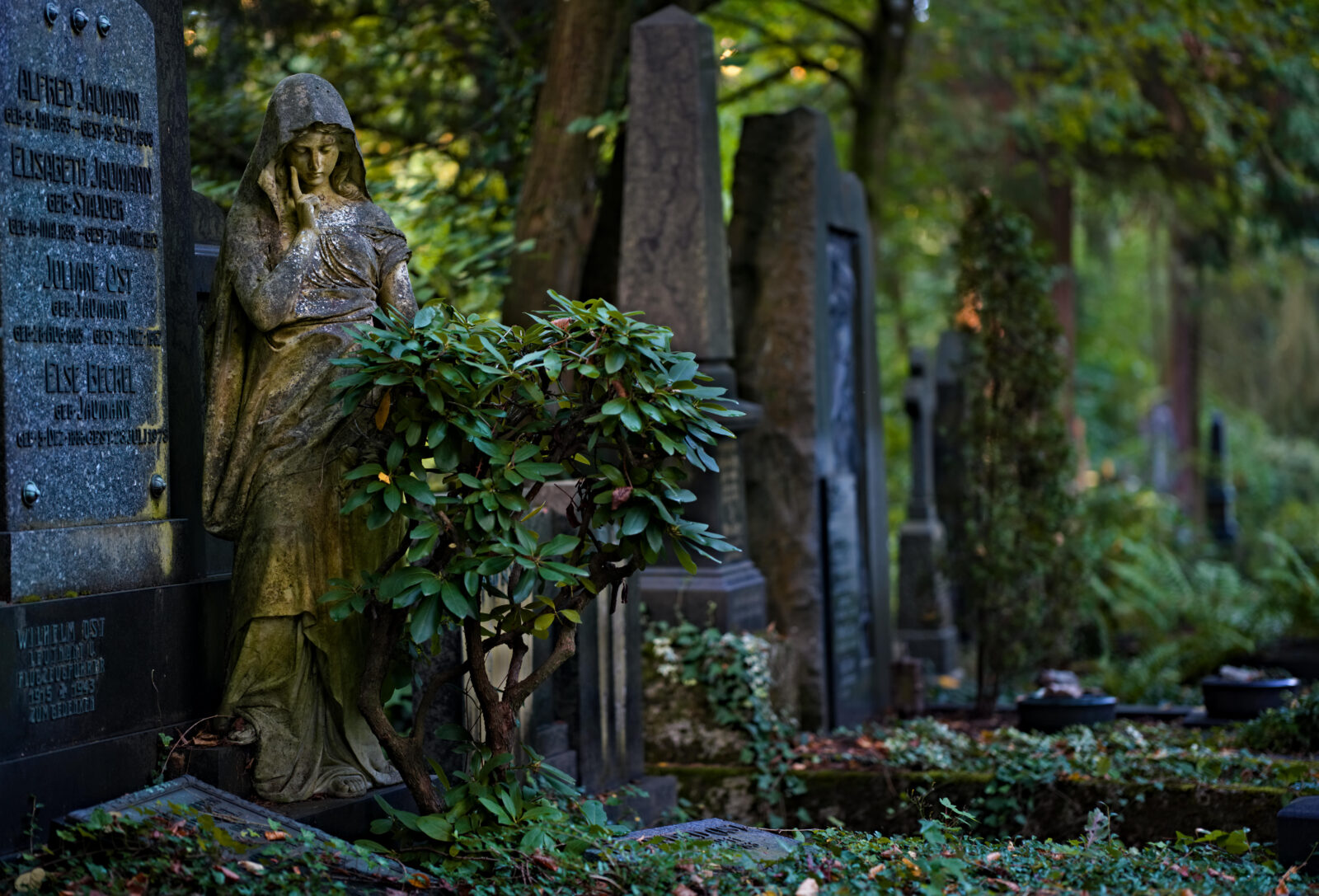
The photo of the statue was taken at dusk in the shade of the surrounding trees on a beautiful summer evening. The circles of confusion were caused by the light falling through small gaps in the vegetation. Fortunately, I only discovered the spider on the woman’s face later. The statue is on the grave of of Georg and Clotilde Kieffer (née Breithaupt); there are no birth or death dates inscribed. He comes from Nuremberg, she from Wieblingen, both died in Wiesbaden.
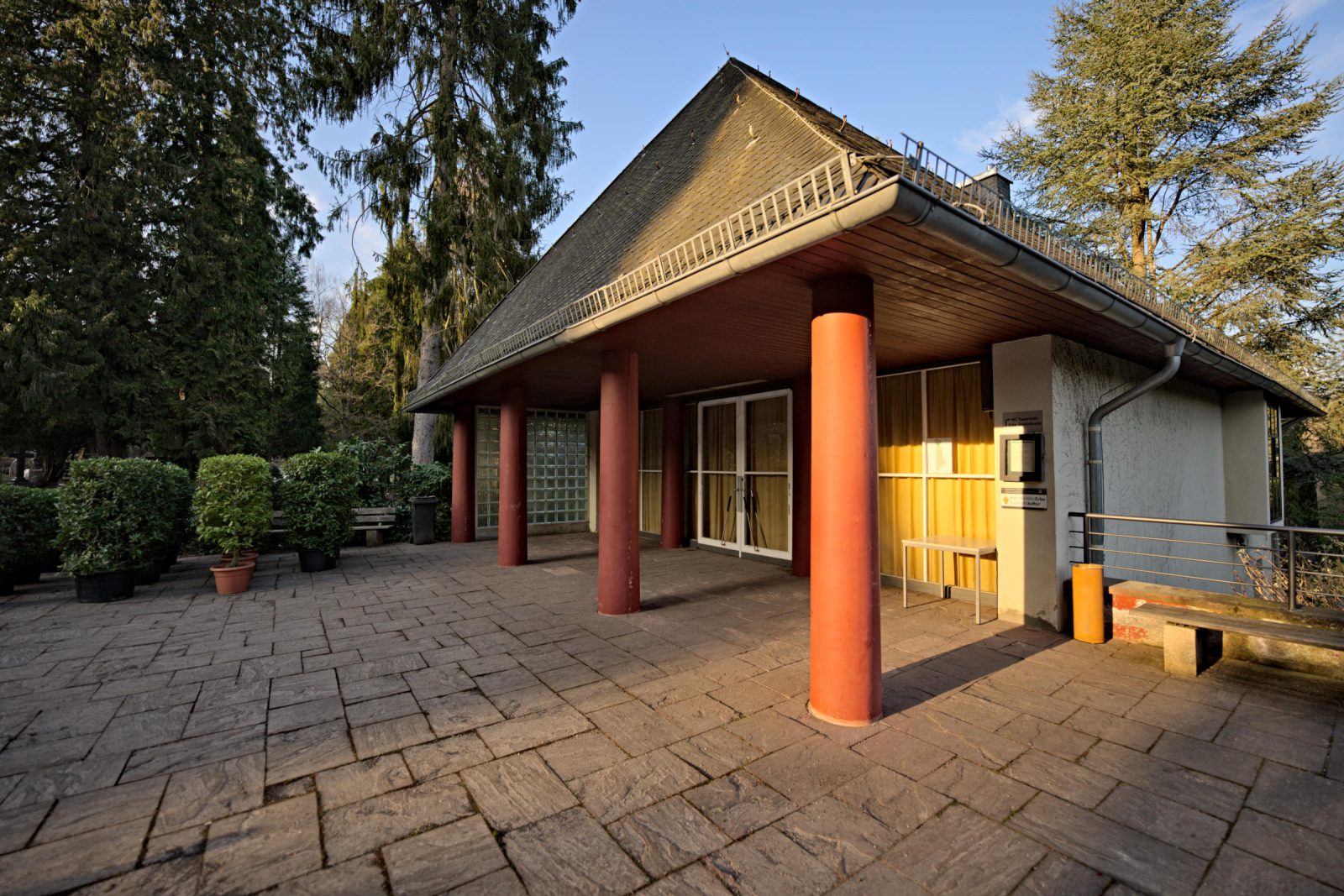

Left: The North Cemetery did not have its own mourning hall until 1957. Until its opening on 18.08.1957, the mortuary and mourning hall of today’s Old Cemetery was still used (see here), where no new graves had been laid since 1877. The Image shows the hall in the evening, shortly before sunset.
The picture on the right shows the interior of the columbarium at the North Cemetery, which was opened on 12.10.1902. Cremations were not popular in Germany for a long time. Until a crematorium was finally opened at the South Cemetery in Wiesbaden in 1912, cremations had to be carried out in Heidelberg, Offenbach and finally in Mainz.
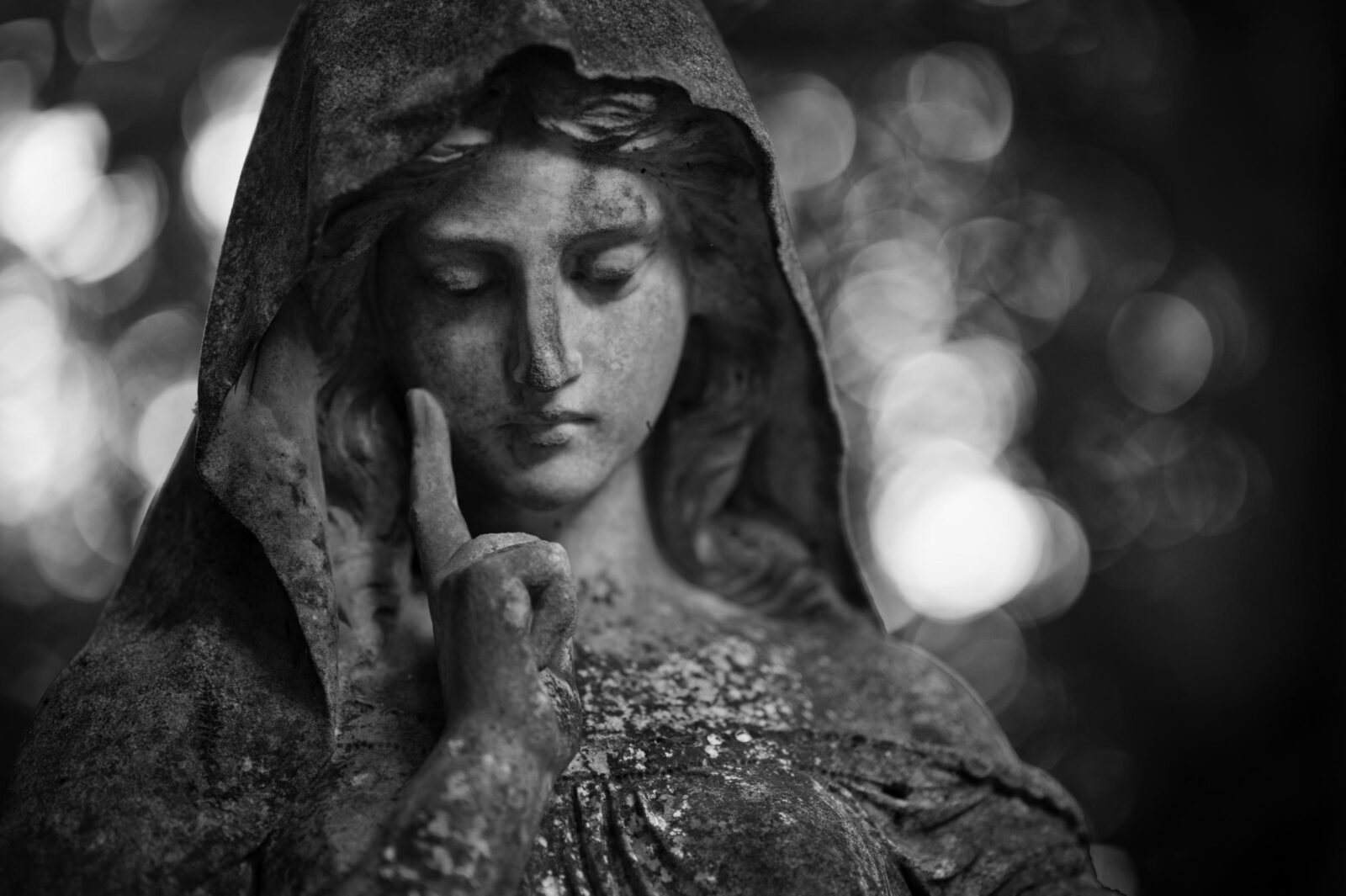
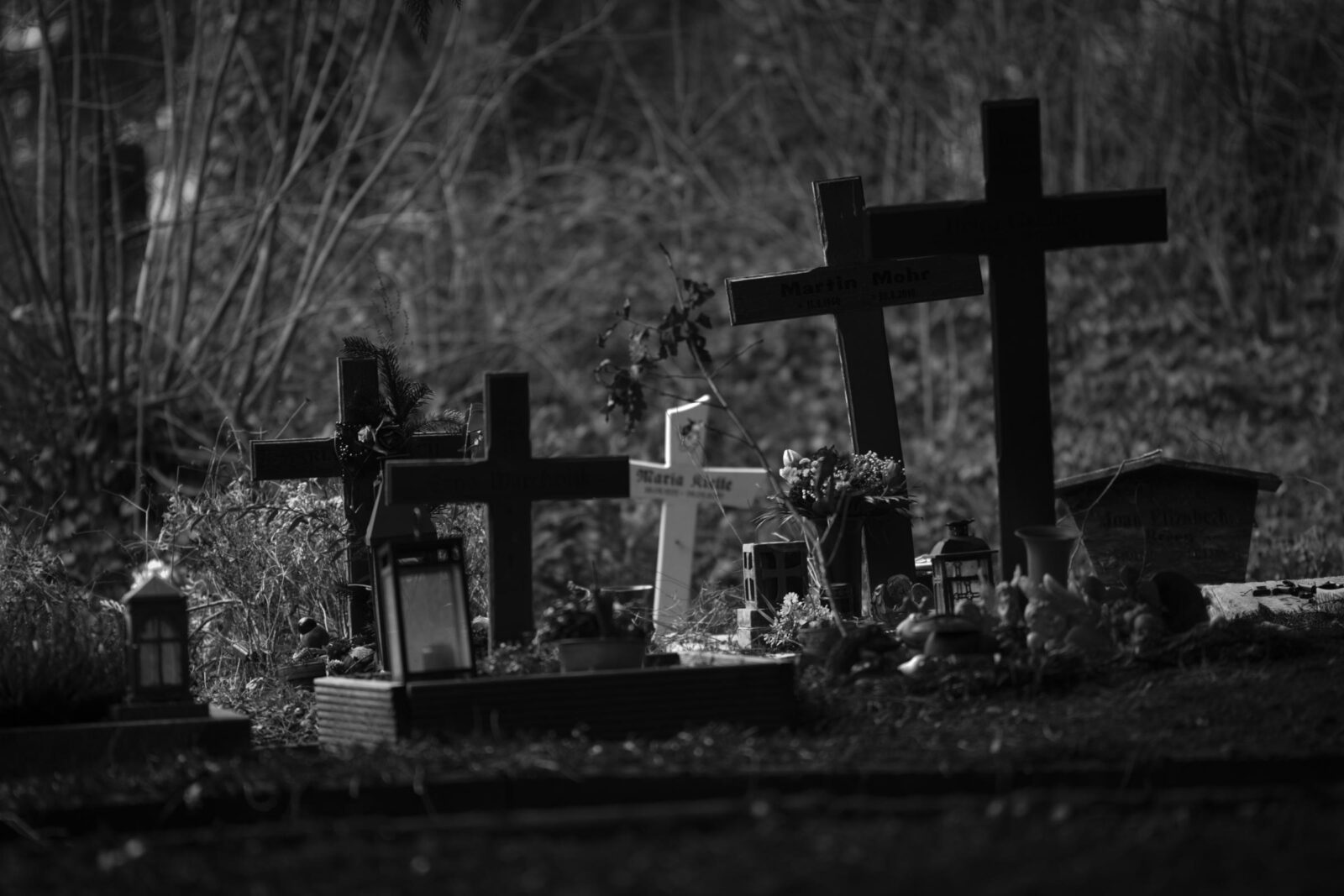
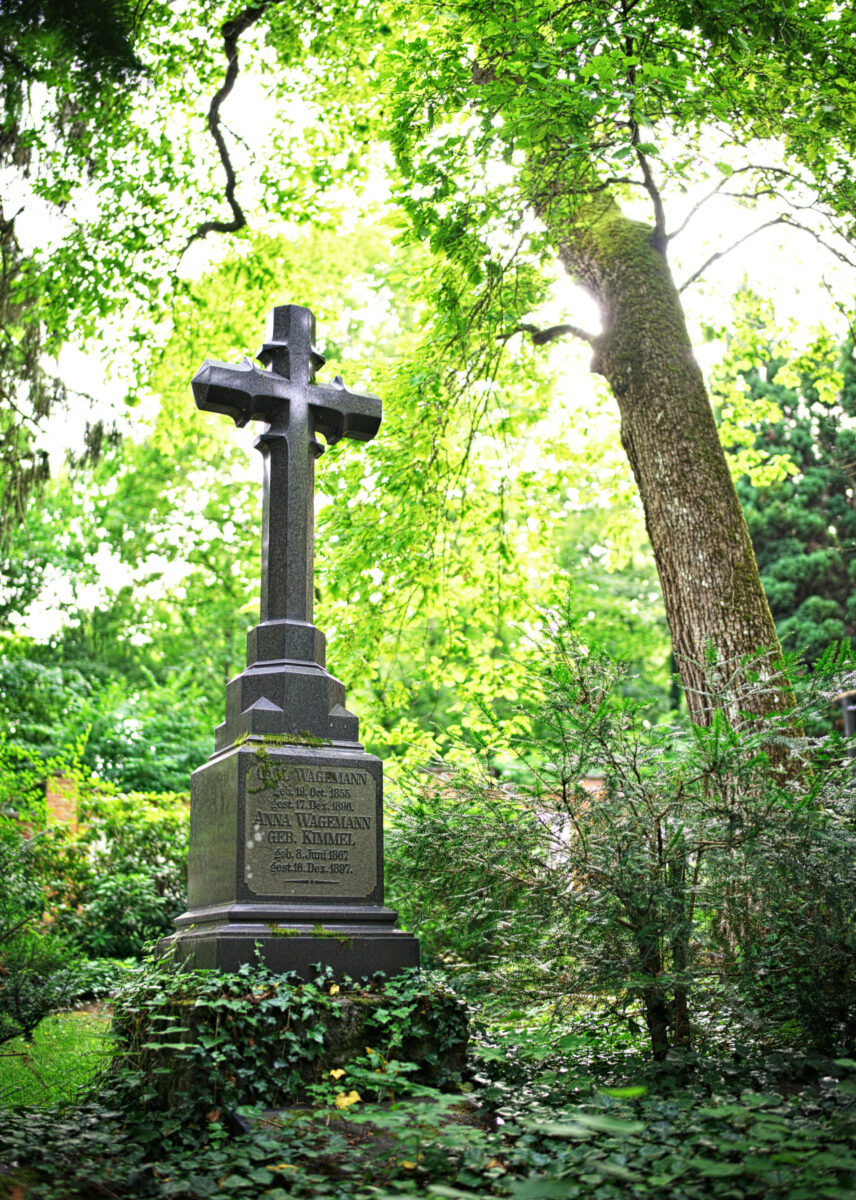
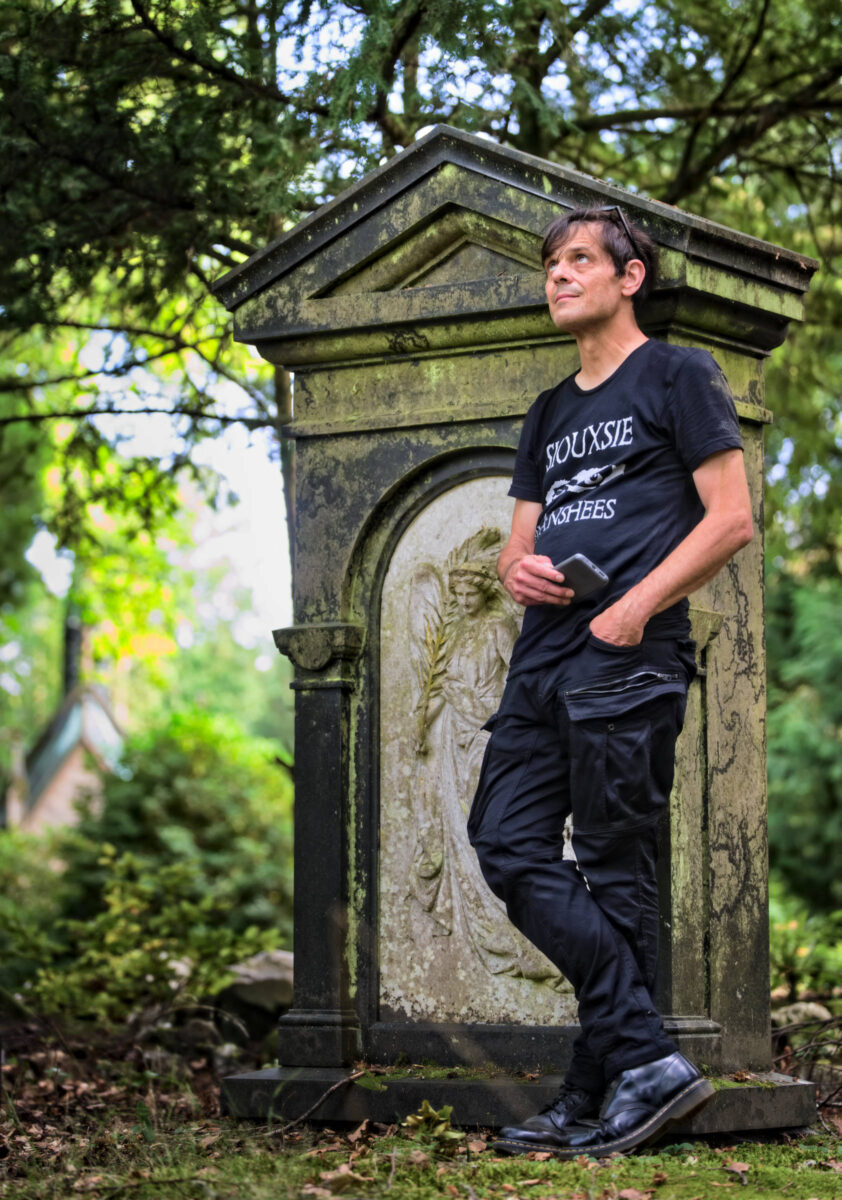
Self-portrait in the Wiesbaden North Cemetery in front of the remains of the tombstone of Friedrich Vollmer (1842-1898) and his wife Christine (née Höning).

The Jewish community of Wiesbaden maintained a cemetery “Auf dem Kuhberg” (today: “Schöne Aussicht”) from 1747 to 1890. In 1876, an orthodox part of the community split off, which now needed its own burial ground and was given this in 1877 at the south-eastern corner of the northern cemetery, separated from it by a wall – the Old Israelite Cemetery. The last burial took place here in 1965, according to another source in 1942. It is not freely accessible.
However, the remaining Jewish community eventually had to give up the cemetery Auf dem Kuhberg as well, as the urban development had moved too close to it. On 13.01.1891, the community was given its own plot of land at the northern end of the North Cemetery to build a new Israelite cemetery, on which a mourning hall was erected in 1891 and which is still in use today. This cemetery is also separated from the rest of the North Cemetery for religious reasons and has its own entrance from Platter Straße. However, there is also a gate that allows passage from the general to the Jewish section every Friday. Today, 17.04.2025, the day before Good Friday, the gate was also open, however, so I had the opportunity to take a few photos – and fortunately a jacket with a hood, so I also had a head covering. The photo shows a gravestone in front of the 1891 mourning hall in cloudy weather.
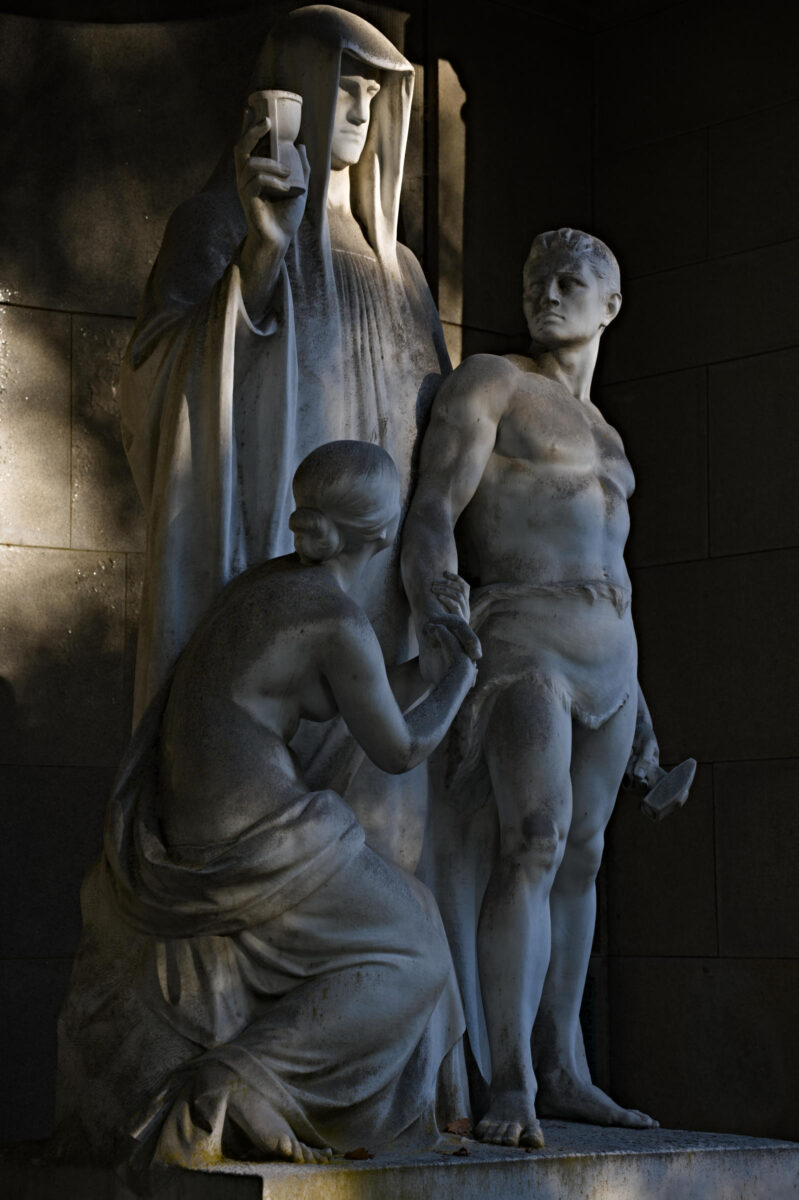
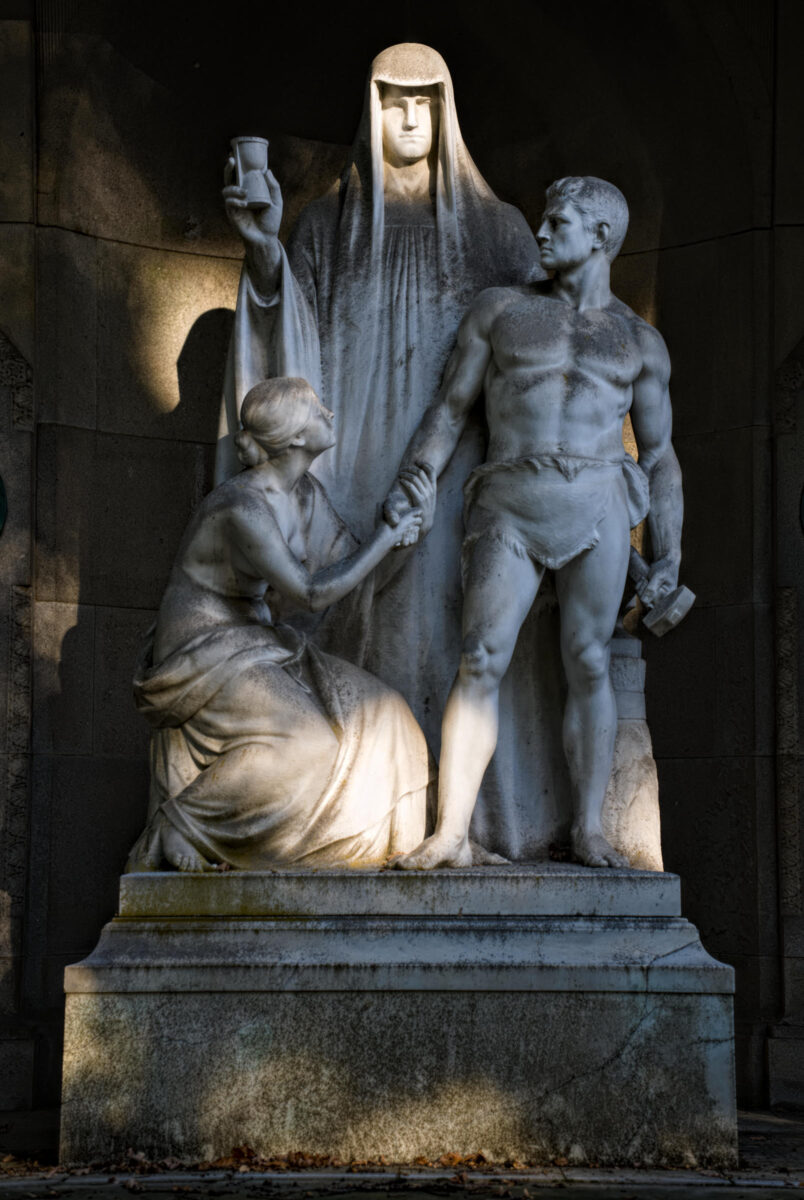
The grave of Eduard Arnold Bartling (*19.06.1845 in Lenhausen †03.08.1927 in Wiesbaden), a German entrepreneur and politician of the National Liberal Party, member of the Reichstag and the Prussian House of Representatives for Wiesbaden, and a supporter of Otto von Bismarck’s policies.
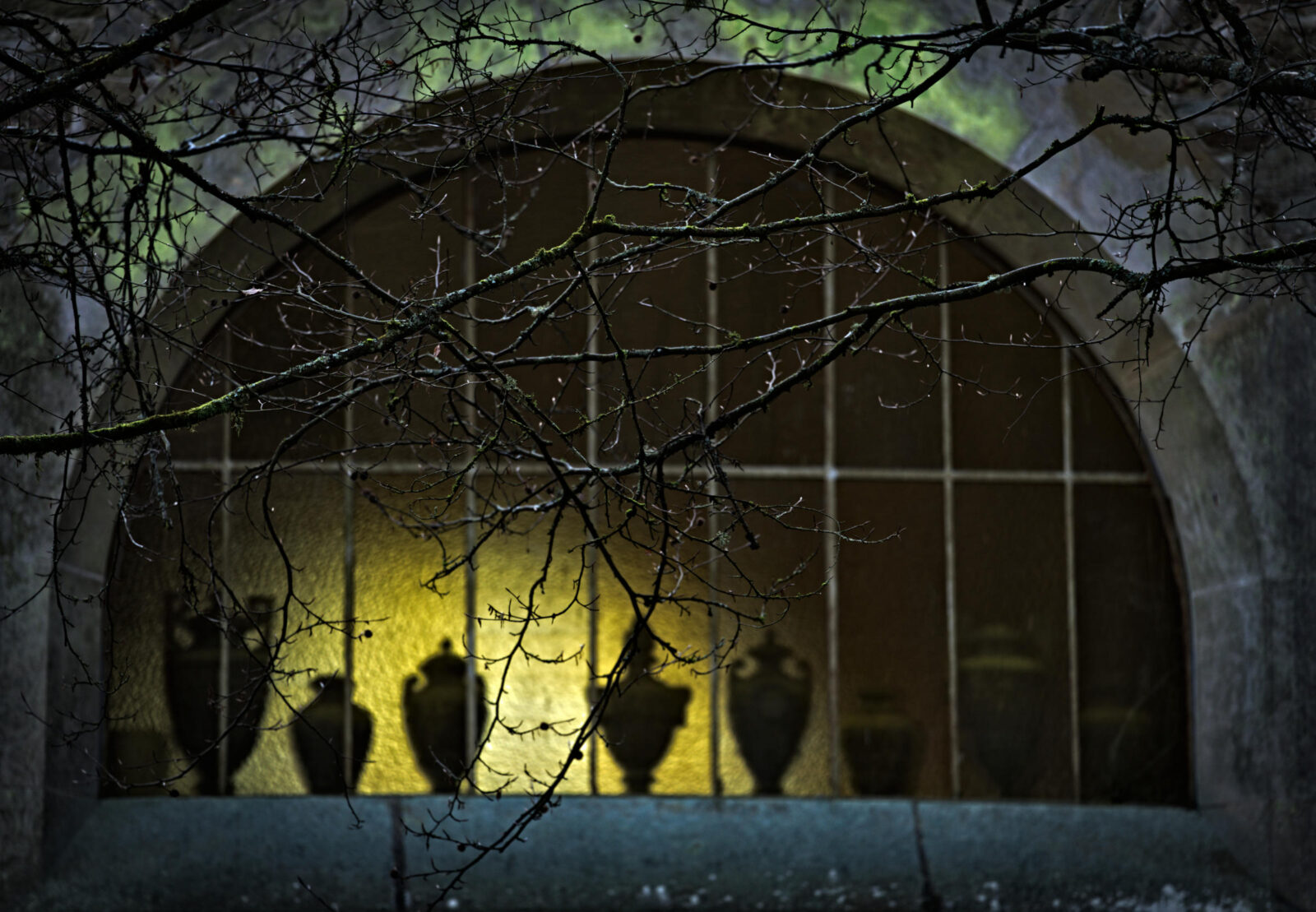
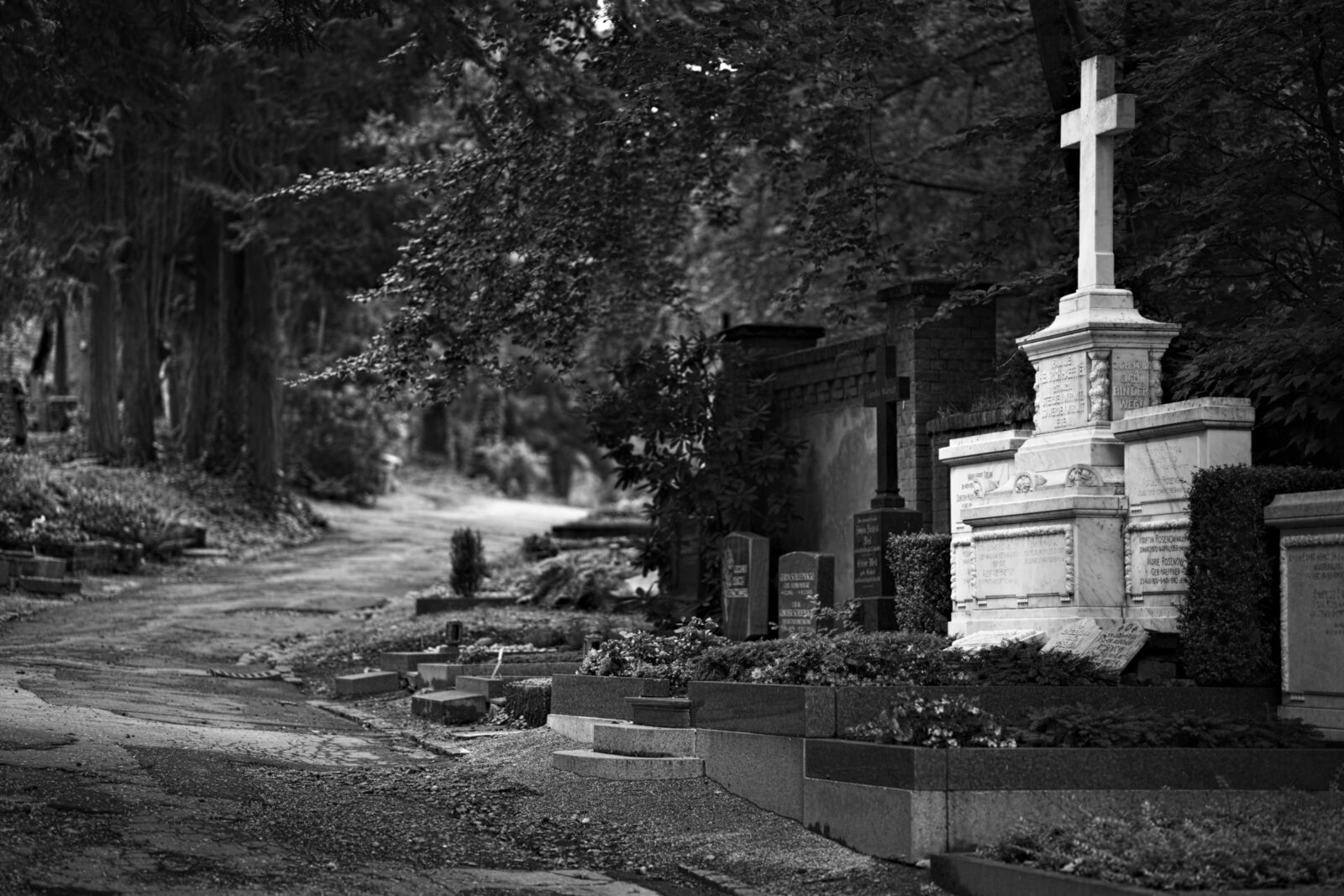
Left: Another detail of the Columbarium. Right: The grave of the Royal Prussian Kommerzienrat (“Councillor of Commerce” – a title of honour) Heinrich Haeffner (*29 December 1849 †28 May 1928) and his relatives shines brightly on the eastern wall of the North Cemetery. The view is to the north and shows the undulating profile of the cemetery, which rises by 40 metres from south-east to north-west.
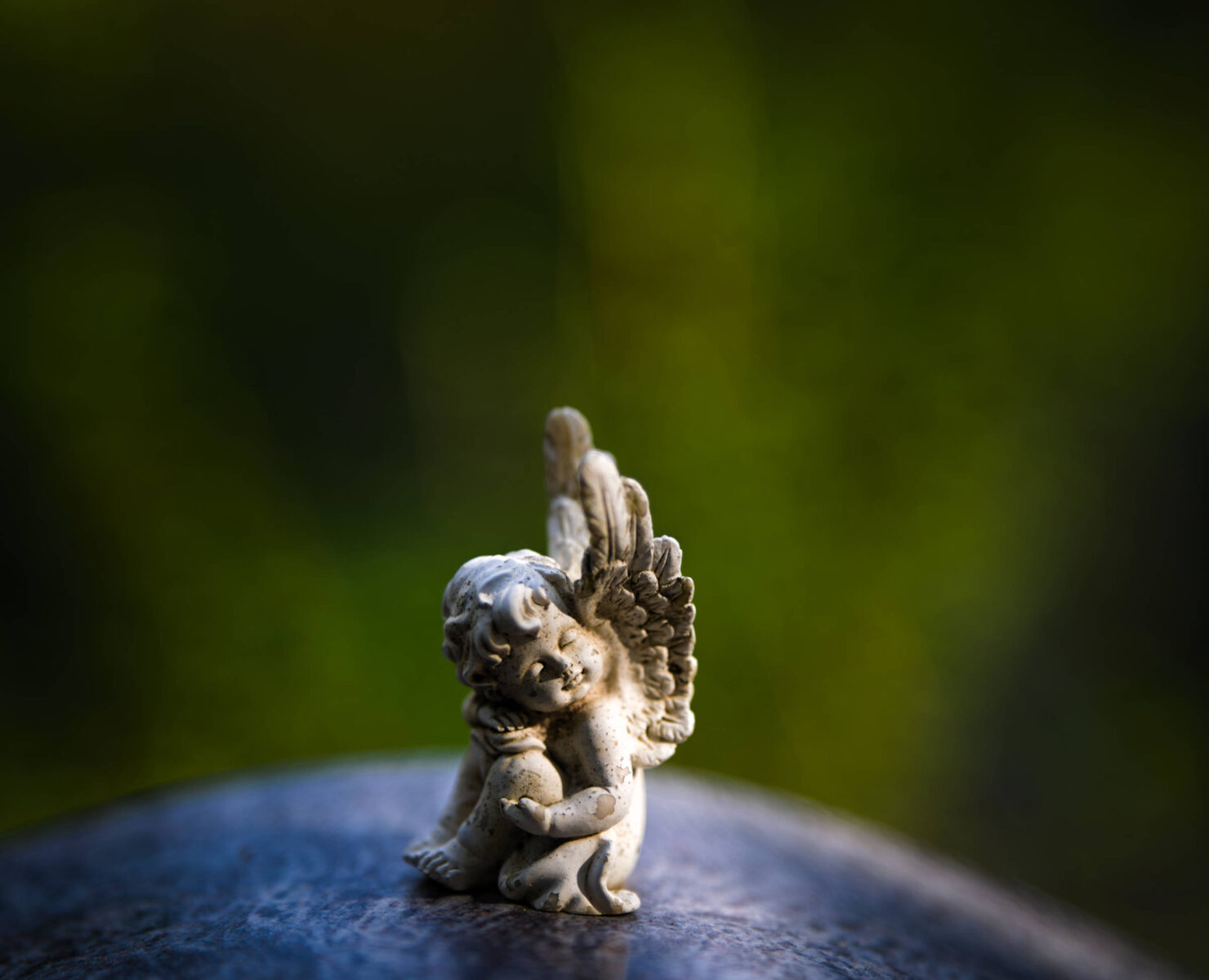
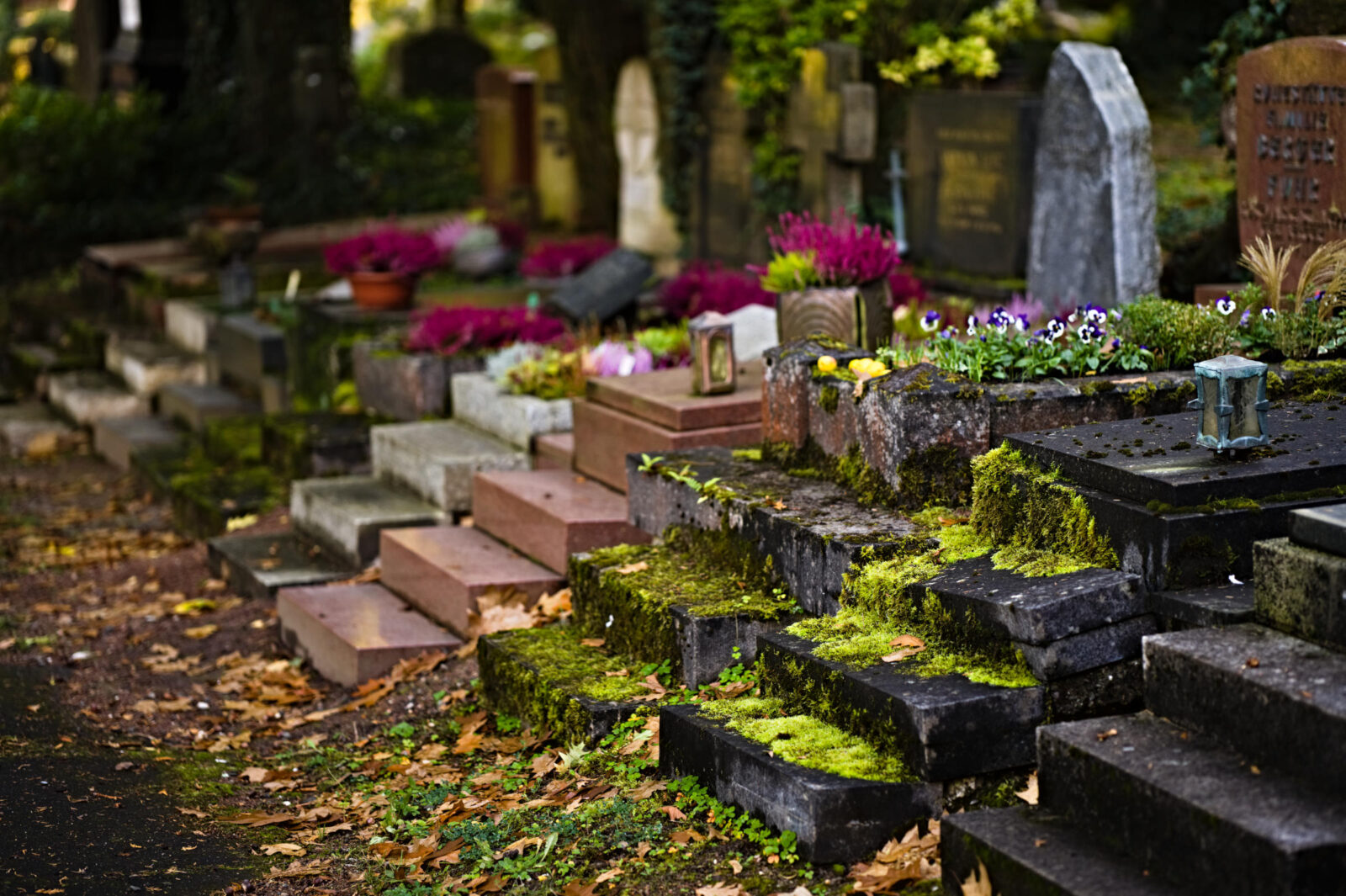
Left: Small angel figurine on a tombstone in Wiesbaden’s North Cemetery. Right: A closely spaced group of graves that rise up on the slope above the neighbouring path and are therefore only accessible via small steps. The group is captivating, especially in wet weather, due to its colourfulness, the different coloured stones, the flowers of the grave decorations and the almost fluorescent green of the moss and lichen covering.
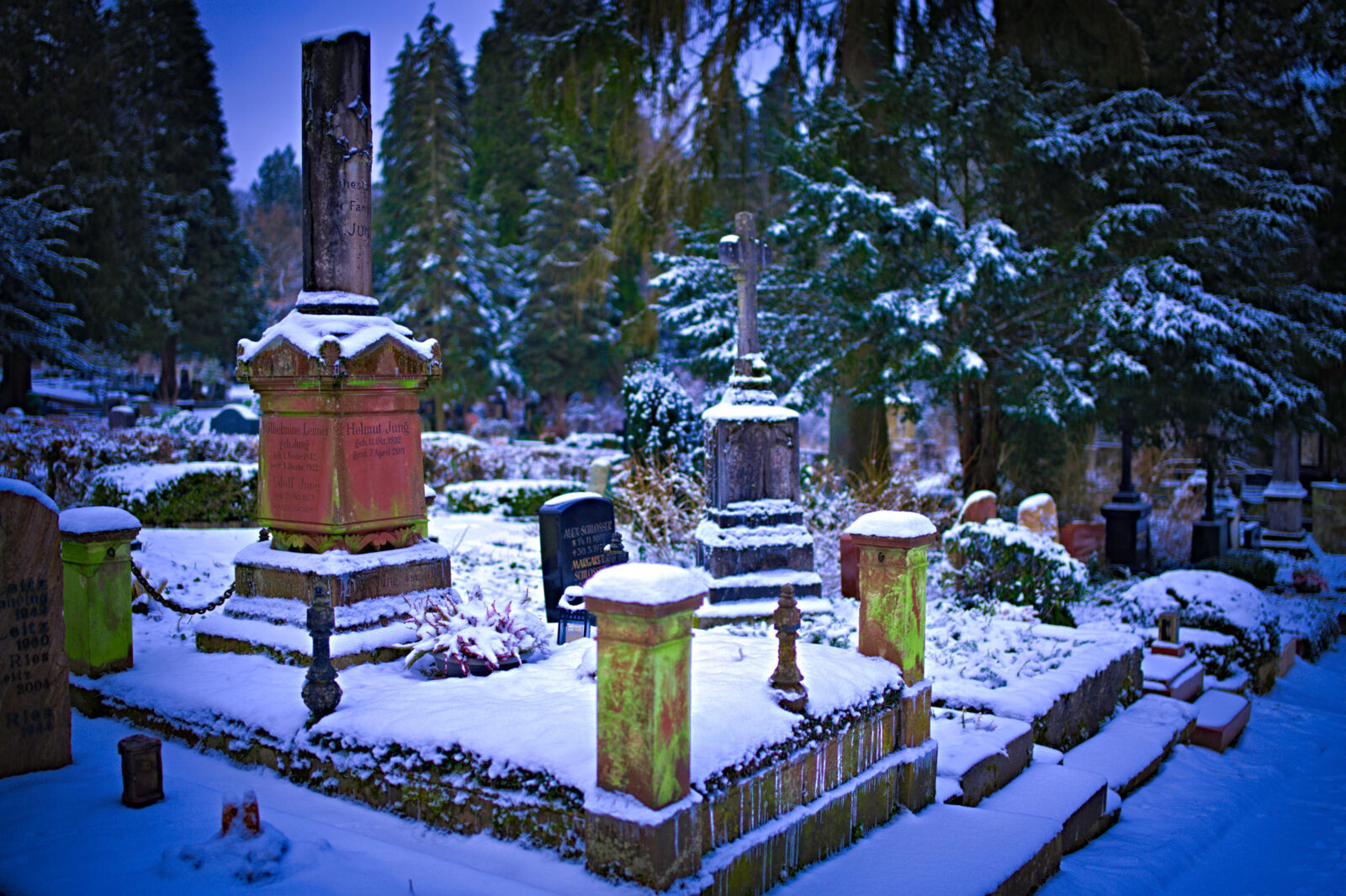
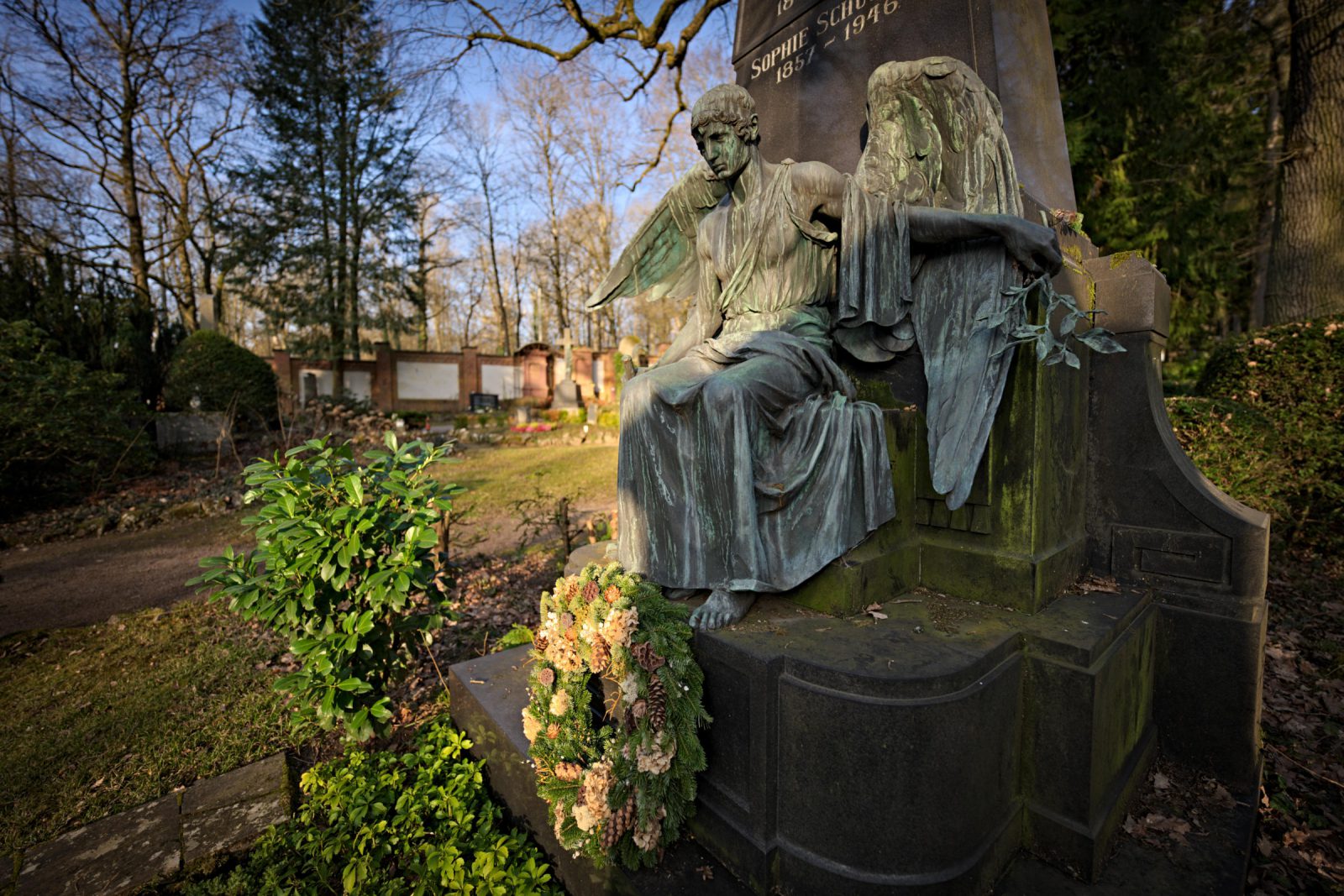
Left: The grave of the Jung family on a gloomy winter’s day shortly before sunset.
Right: The tomb of Johann Sigmund (*18.10.1846 in Nürnberg †17.09.1895 in Wiesbaden) and Marie Sophie Schuckert (née Giesin, 1857 – 1946) in Wiesbaden’s North Cemetery about an hour after sunrise. Schuckert was a German electrical engineer and founder of the company Schuckert & Co (Schuckertwerke). He was one of the pioneers of German industrialization. The company later merged with Siemsens to form Siemens-Schuckert(werke).

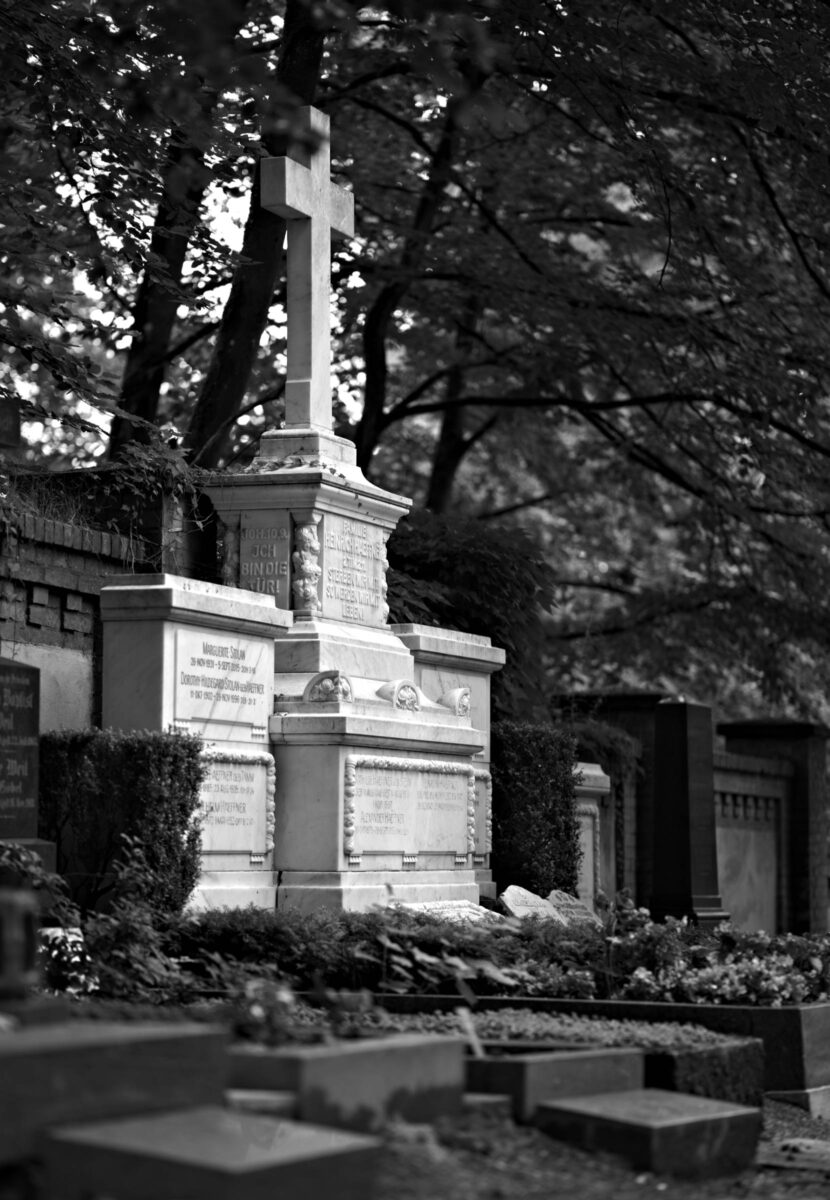
Left: The sun was still low in the morning sky and shone through the two window fronts of the columbarium.
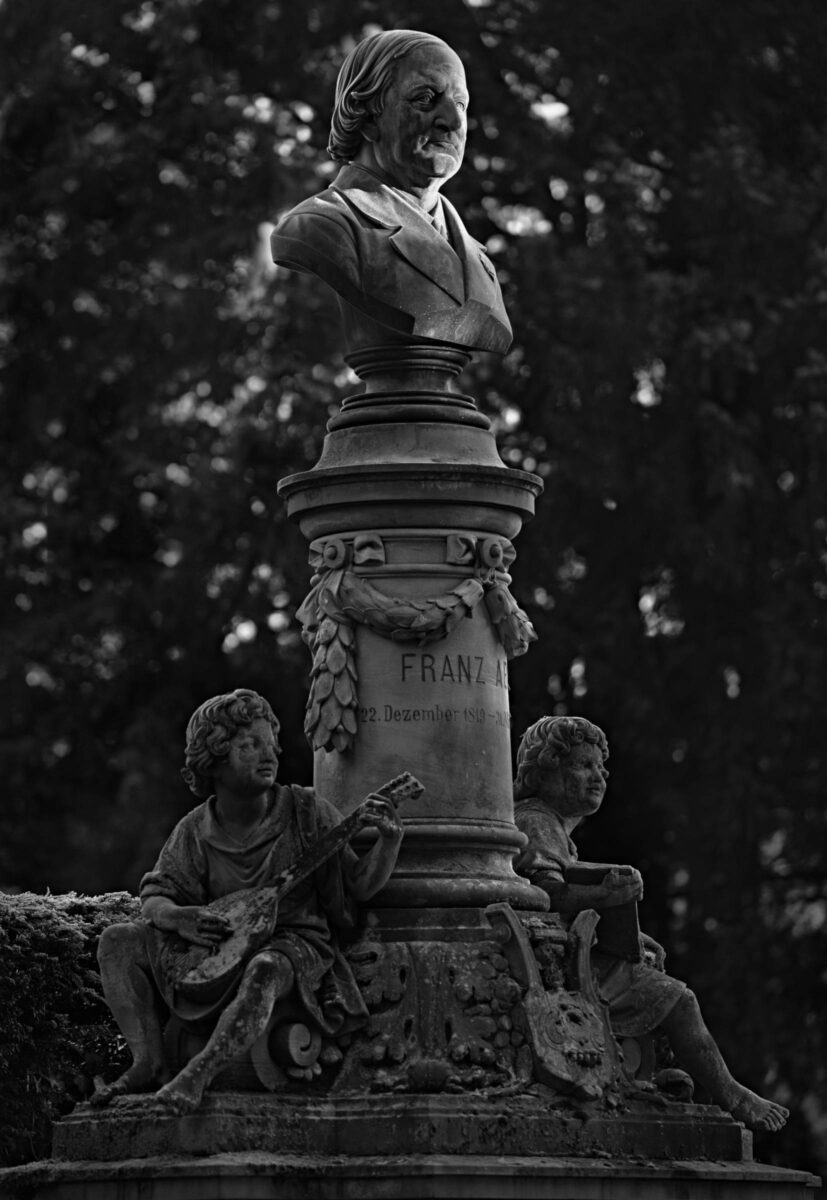
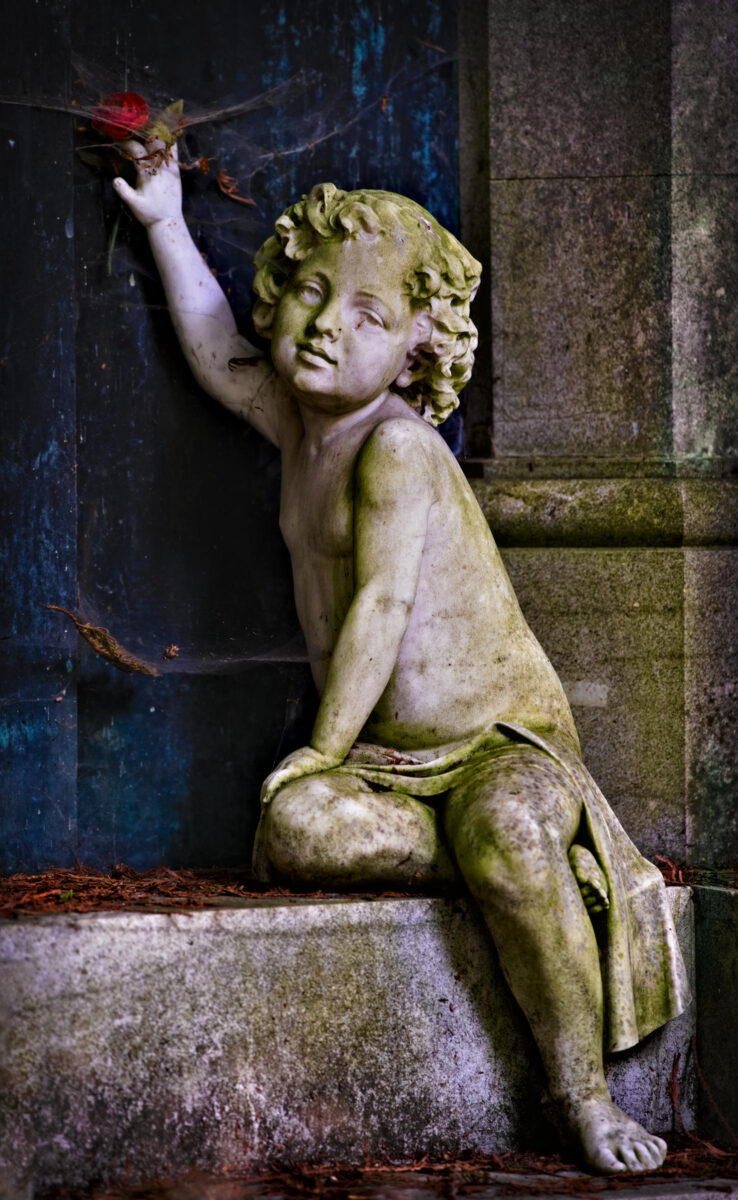
The picture on the left shows the grave of Franz Abt from Eilenburg in Saxony (*22.12.1819 †31.03.1885) in the first rays of sunshine of a new winter’s day. He was a well-known 19th century German composer who worked in many cities and only spent the last three years of his life in Wiesbaden. My evening walk regularly takes me past the house where he died on 31.03.1885.
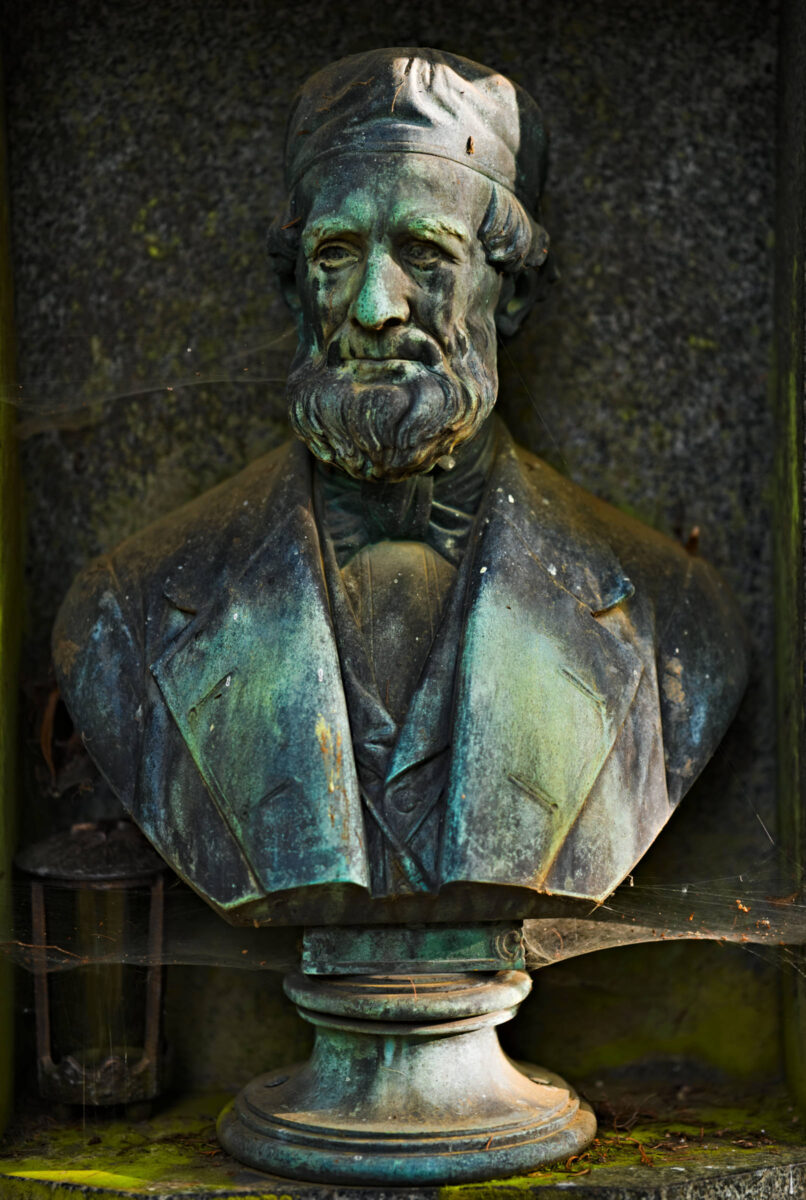

Bust of the rector Dr. Willhelm Fricke (*04.12.1810 Braunschweig †28.03.1891 Wiesbaden) on his tomb. Fricke was was a German rector and educational writer.
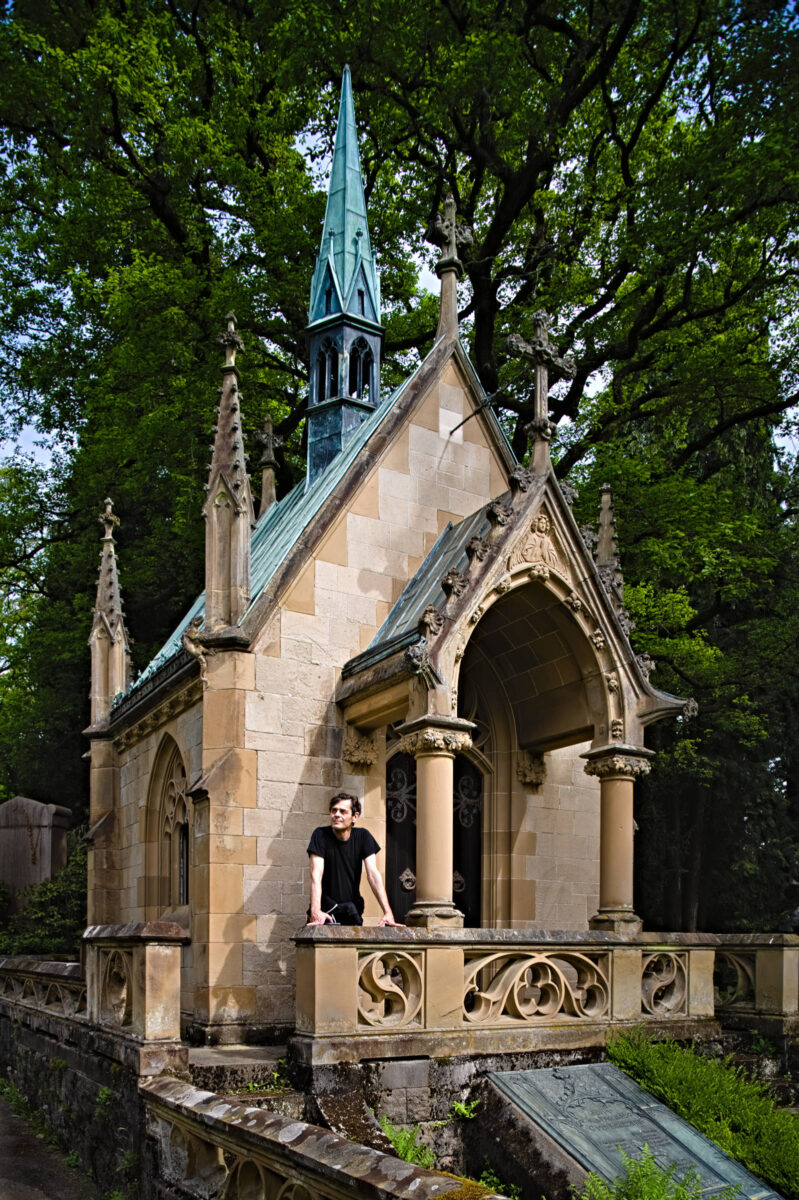

Crypt chapel of the Kreizner family with the grave of Otto Kreizner (*15.03.1845 †07.06.1905) in neo-Gothic style. There is a prayer room inside, the crypt itself is accessible from the outside. I have used a shift objectiv to avoid converging lines.
At another part of the cemetery, my wife patiently endures me taking a photo in a low key gothic stye of her. I didn’t want to try her patience by asking her to put her smartphone away. Just think of it as a gothic phone with brass fittings.

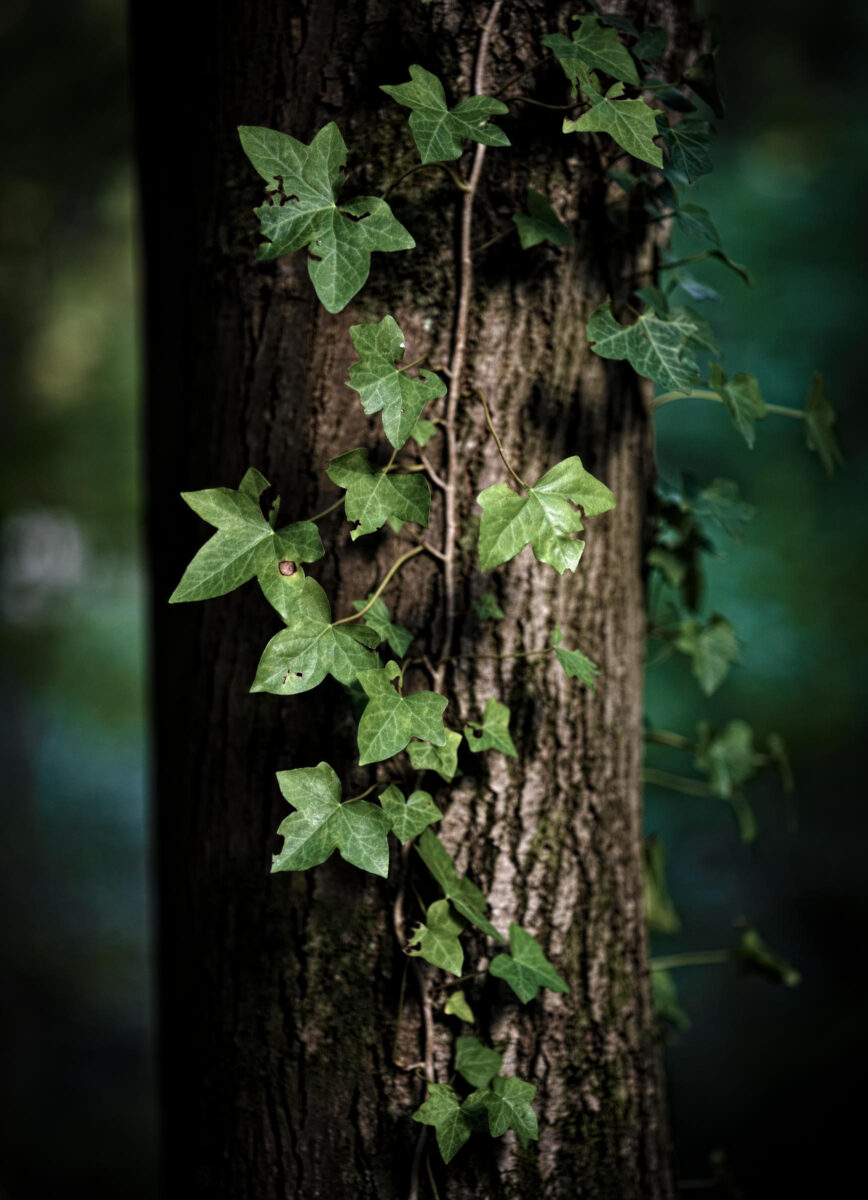
Ivy-covered tree on an early autumn day in Wiesbaden’s North Cemetery